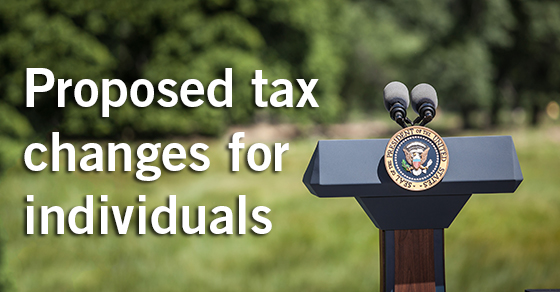A Brief Overview Of The President-Elect’s Tax Plan For Individuals
Now that Donald Trump has been elected President of the United States and Republicans have retained control of both chambers of Congress, an overhaul of the U.S. tax code next year is likely. President-elect Trump’s tax reform plan, released earlier this year, includes the following changes that would affect individuals:
- Reducing the number of income tax brackets from seven to three, with rates on ordinary income of 12%, 25% and 33% (reducing rates for many taxpayers but resulting in a tax hike for certain single filers),
- Aligning the 0%, 15% and 20% long-term capital gains and qualified dividends rates with the new brackets,
- Eliminating the head of household filing status (which could cause rates to go up for some of these filers, who would have to file as singles),
- Abolishing the net investment income tax,
- Eliminating the personal exemption (but expanding child-related breaks),
- More than doubling the standard deduction, to $15,000 for singles and $30,000 for married couples filing jointly,
- Capping itemized deductions at $100,000 for single filers and $200,000 for joint filers,
- Abolishing the alternative minimum tax, and
- Abolishing the federal gift and estate tax, but disallowing the step-up in basis for estates worth more than $10 million.
The House Republicans’ plan is somewhat different. And because Republicans didn’t reach the 60 Senate members necessary to become filibuster-proof, they may need to compromise on some issues in order to get their legislation through the Senate. The bottom line is that exactly which proposals will make it into legislation and signed into law is uncertain, but major changes are just about a sure thing.
If it looks like you could be eligible for lower income tax rates next year, it may make sense to accelerate deductible expenses into 2016 (when they may be more valuable) and defer income to 2017 (when it might be subject to a lower tax rate). But if it looks like your rates could be higher next year, the opposite approach may be beneficial.
In either situation, there is some risk to these strategies, given the uncertainty as to exactly what tax law changes will be enacted. We can help you create the best year-end tax strategy based on how potential changes may affect your specific situation.
© 2016

